Instagram Post Scraper: 4 Brilliant Tips for Optimal Usage
- Introduction
- What is an Instagram post scraper?
- Importance of scraping in the digital age
- The Mechanics of Instagram Scraping
- How does it work?
- Different types of scrapers
- Benefits of Using Instagram Post Scrapers
- Market research and analysis
- Competitive analysis
- Influencer identification and engagement
- Potential Drawbacks
- Ethical concerns
- Legal implications
- Instagram’s policies and restrictions
- Key Features to Look for in a Scraper
- User-friendliness
- Data accuracy
- Speed and efficiency
- How to Choose the Right Instagram Post Scraper
- Price considerations
- User reviews and recommendations
- The longevity of the product
- Practical Applications in Real Life
- Case studies
- Successful scraping campaigns
- Common Mistakes and How to Avoid Them
- Over-reliance on automated data
- Not updating the scraping tools
- The Future of Instagram Scraping
- Instagram’s evolving algorithms
- Advancements in scraping technology
- Conclusion
- FAQs
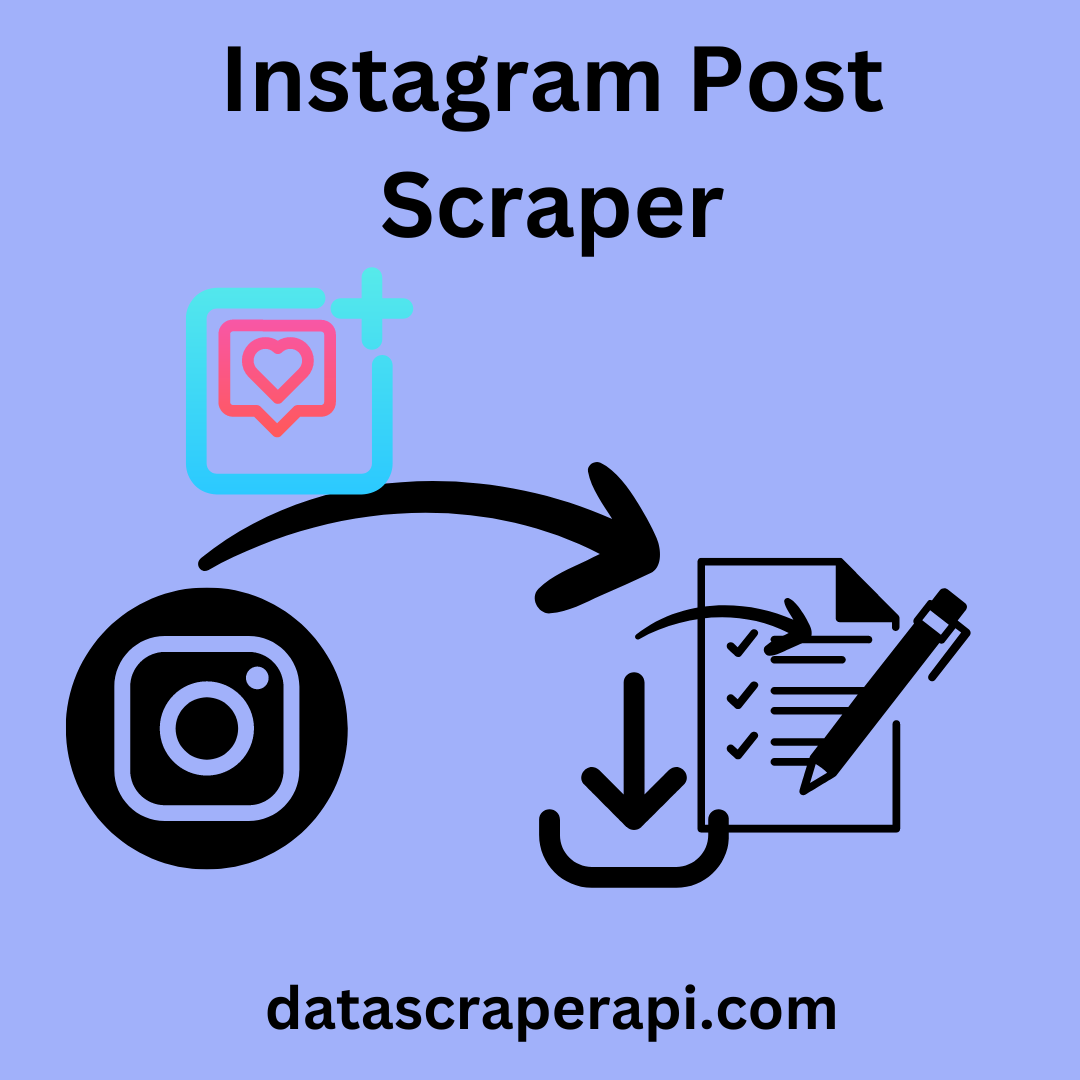
4g proxy based scraping API – Here
Sign up For web and social scraping API – Here
The Ultimate Guide to Instagram Post Scraping
Who hasn’t scrolled through Instagram and thought about how useful all that data could be if compiled in a systematic manner? Enter the world of Instagram post scraping.
Introduction
We live in an era where data is the new gold. What is an Instagram post scraper? At its core, it’s a tool or software that extracts valuable data from Instagram posts for analysis and insights. As we navigate the digital age, the relevance and importance of scraping have only amplified.
An Instagram post scraper is a tool or piece of software that extracts (or “scrapes”) information from Instagram posts. This might include data such as:
- Post content: The actual text or caption of the post.
- Media content: The image, video, or other media attached to the post.
- Post metadata: Data like post date and time, location (if provided), the number of likes, comments, shares, etc.
- User information: Data about the user who posted the content, such as username, bio, number of followers, etc.
There are various reasons someone might want to use an Instagram scraper:
- Research and Analysis: Marketers or social media analysts might want to study trends, sentiments, or popular topics within a niche.
- Competitor Monitoring: Brands might use it to keep an eye on competitors, observing what kind of content they are posting and how well it’s performing.
- Content Aggregation: Content creators might want to gather popular or trending posts from certain hashtags or topics for republishing (with proper credits and permissions, ideally).
- Backup and Archive: Some users might want to backup their own content or create archives of particular content.
However, there are important considerations when it comes to scraping Instagram:
- Legal and Ethical Concerns: Scraping content without permission might infringe on copyrights or terms of service. Instagram’s terms of use explicitly forbid unauthorized scraping of their platform.
- Rate Limits: Automated requests sent too quickly can get your IP address banned or blacklisted by Instagram. Respectful scrapers pace their requests to avoid hitting rate limits.
- Instagram API: In many cases, using Instagram’s official API is the best and most ethical way to gather data. However, there are limitations to the API in terms of the type and amount of data you can retrieve.
- Changing Structures: Instagram, like many platforms, often changes its code structure, meaning scrapers can break and need updating.
- Privacy: Scraping user data without consent can be invasive and unethical. Always ensure you have the right to any data you collect and use.
If you’re considering using or building a scraper, it’s important to familiarize yourself with these challenges and to act responsibly and ethically.
We can scrape several data from 1 Instagram Post. The list is given below.
- Post Content:
- Caption text
- Hashtags used
- Mentions (@usernames)
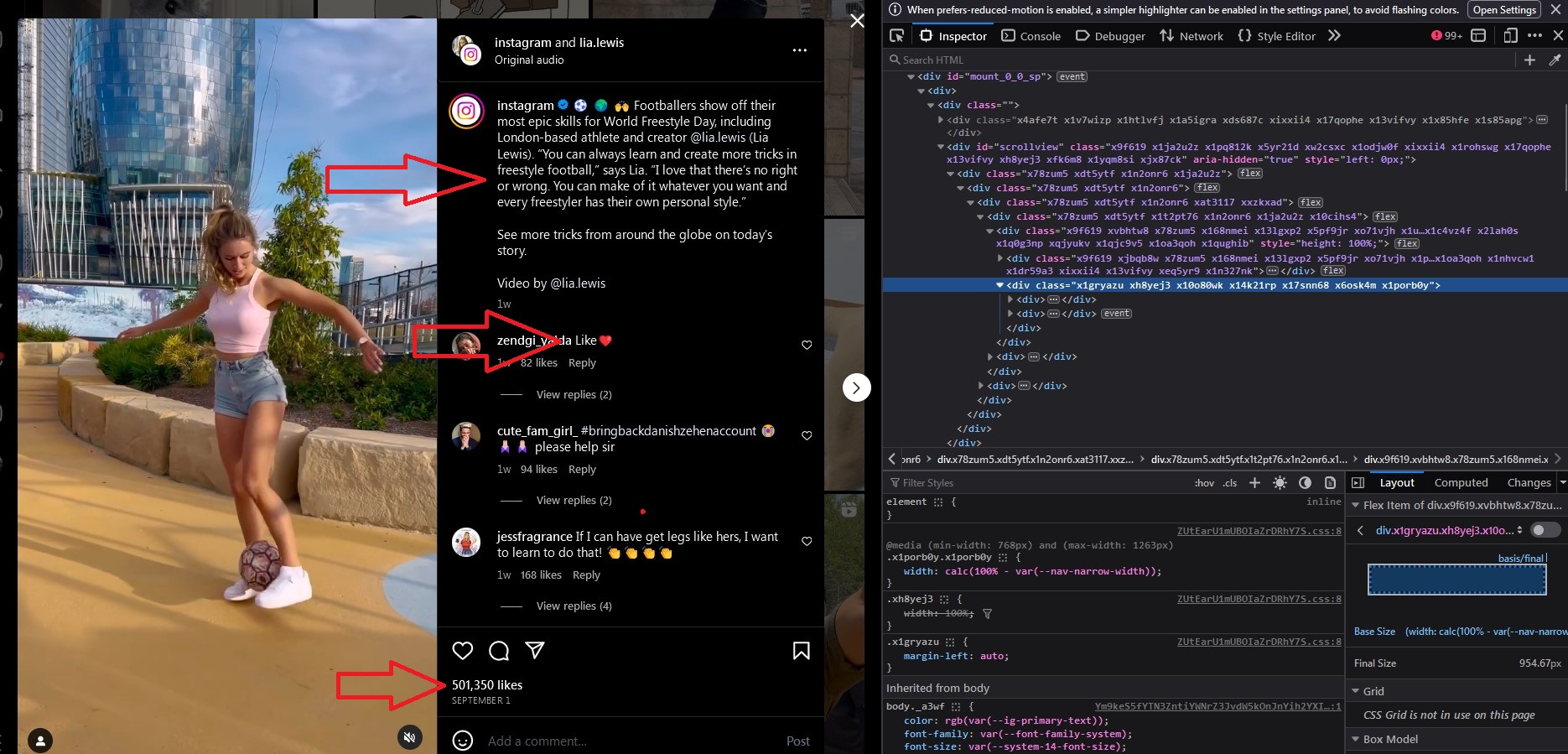
- Media Content:
- Image URL(s)
- Video URL(s) (if it’s a video post)
- Carousel content (if it’s a multi-image/video post)
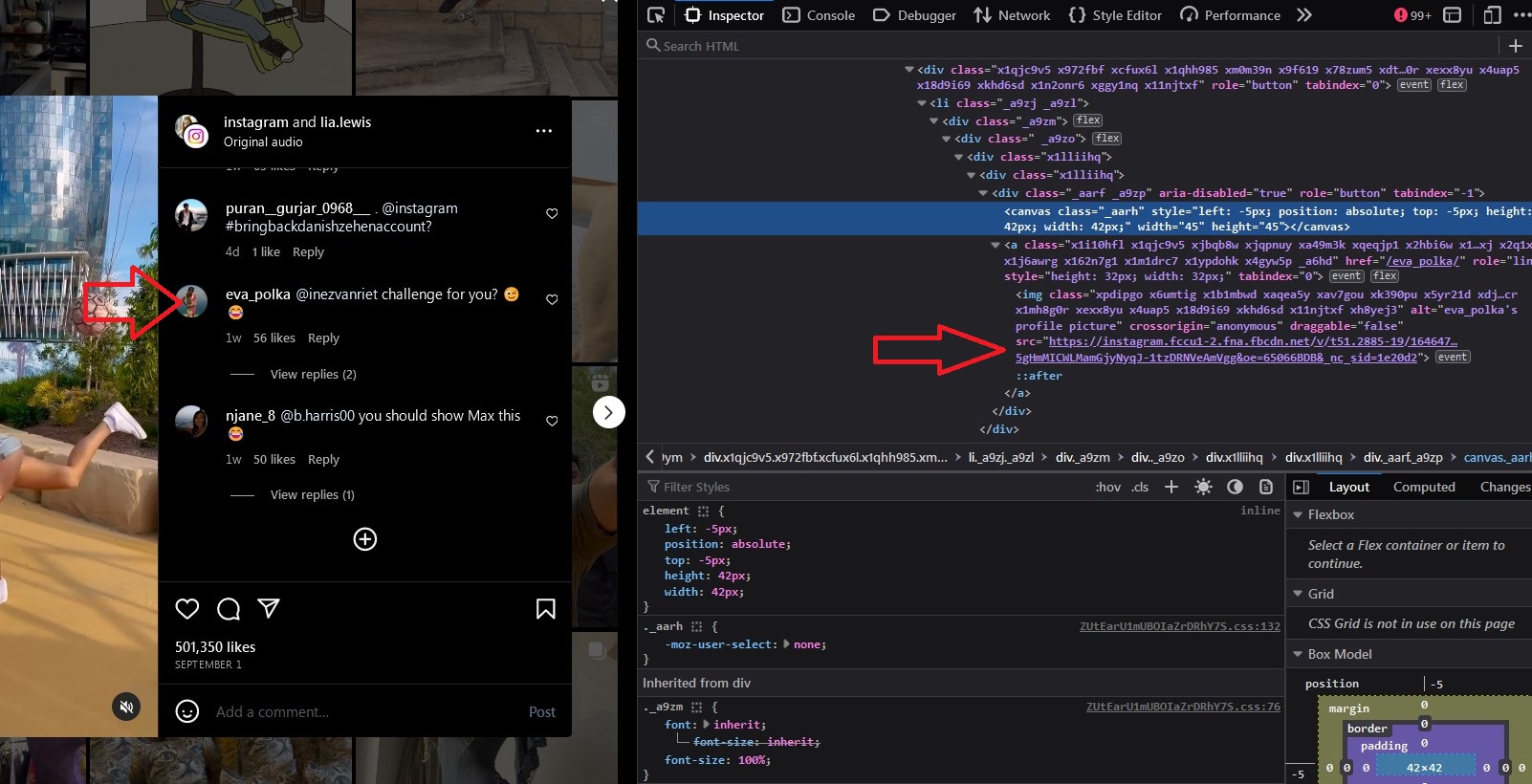
- Post Metadata:
- Post ID (a unique identifier for each post)
- Timestamp (when the post was created)
- Location (if provided by the user)
- Number of likes
- Number of comments
- Type of post (image, video, carousel)
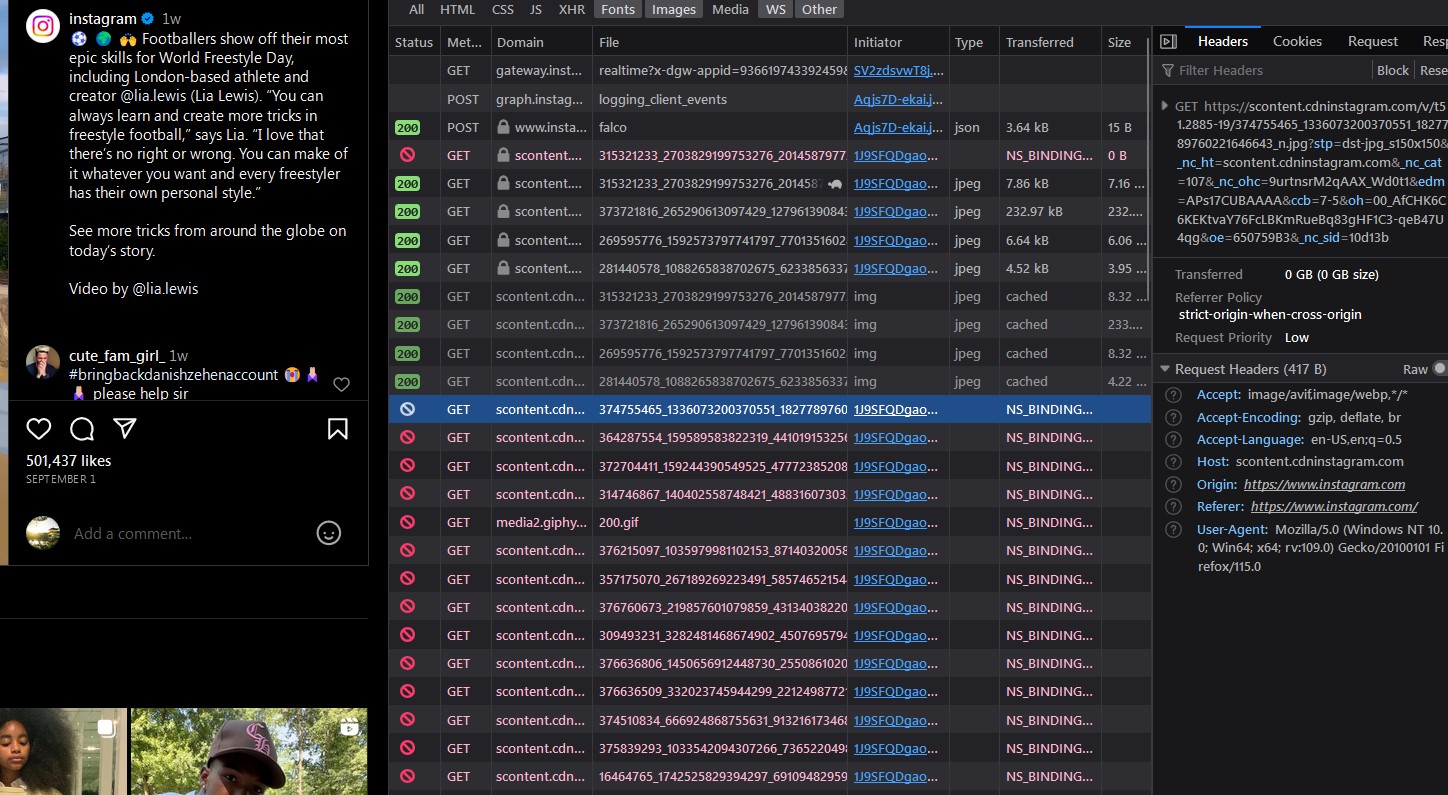
- User Information:
- Username
- User ID (unique identifier for each user)
- User profile picture URL

- Interaction:
- List of users who liked the post (this might be limited depending on privacy settings and the scraper’s capabilities)
- List of comments, including:
- Comment content
- Comment timestamp
- Username of the commenter
- Comment ID
- Tagged Users in Post:
- If any users are tagged in the photo or video, their usernames.
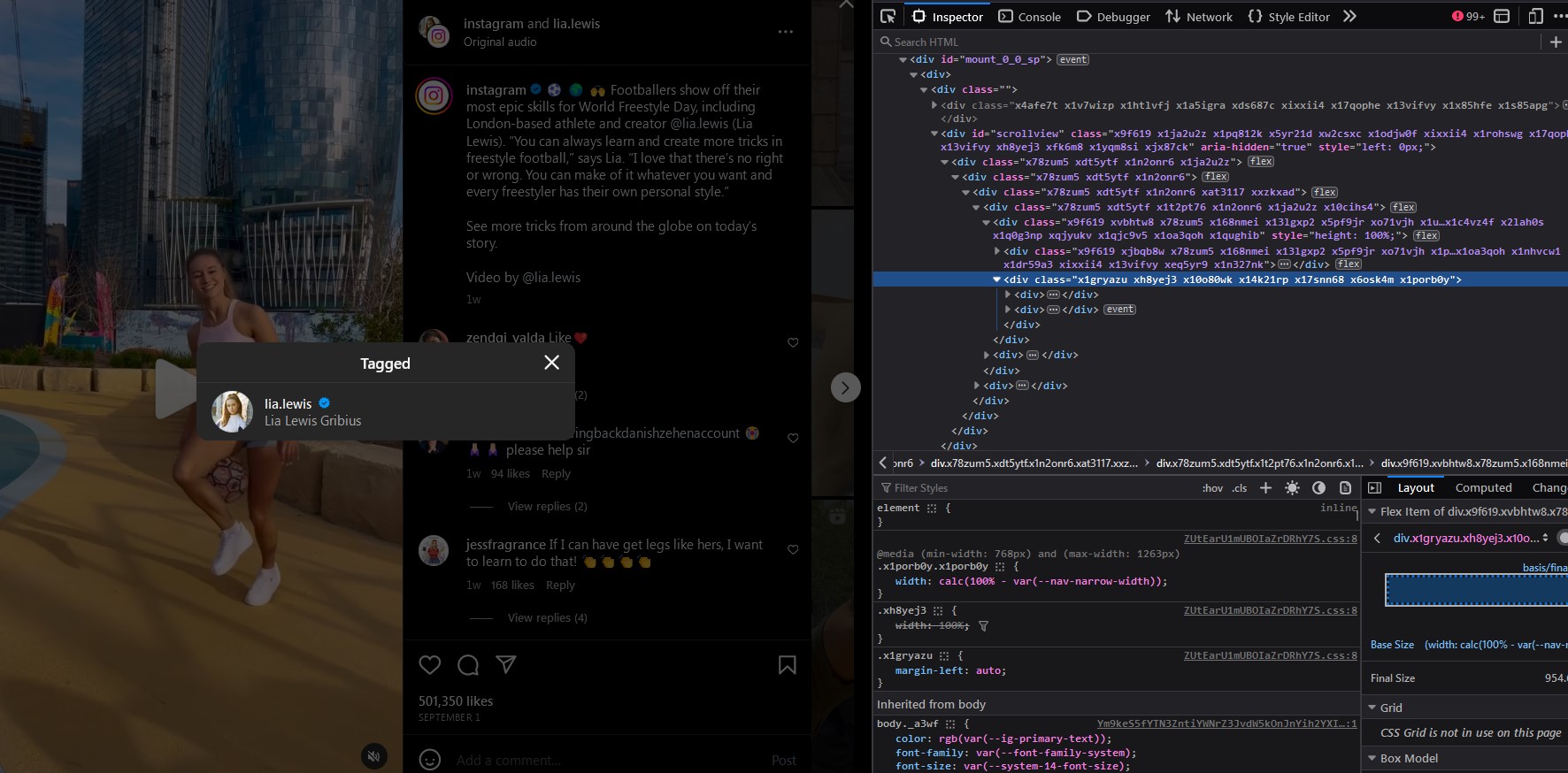
- Additional Media Data:
- Aspect ratio of the media
- Dimensions of the media
- Media format (e.g., .jpg, .mp4)
- URL:
- Direct link to the Instagram post.
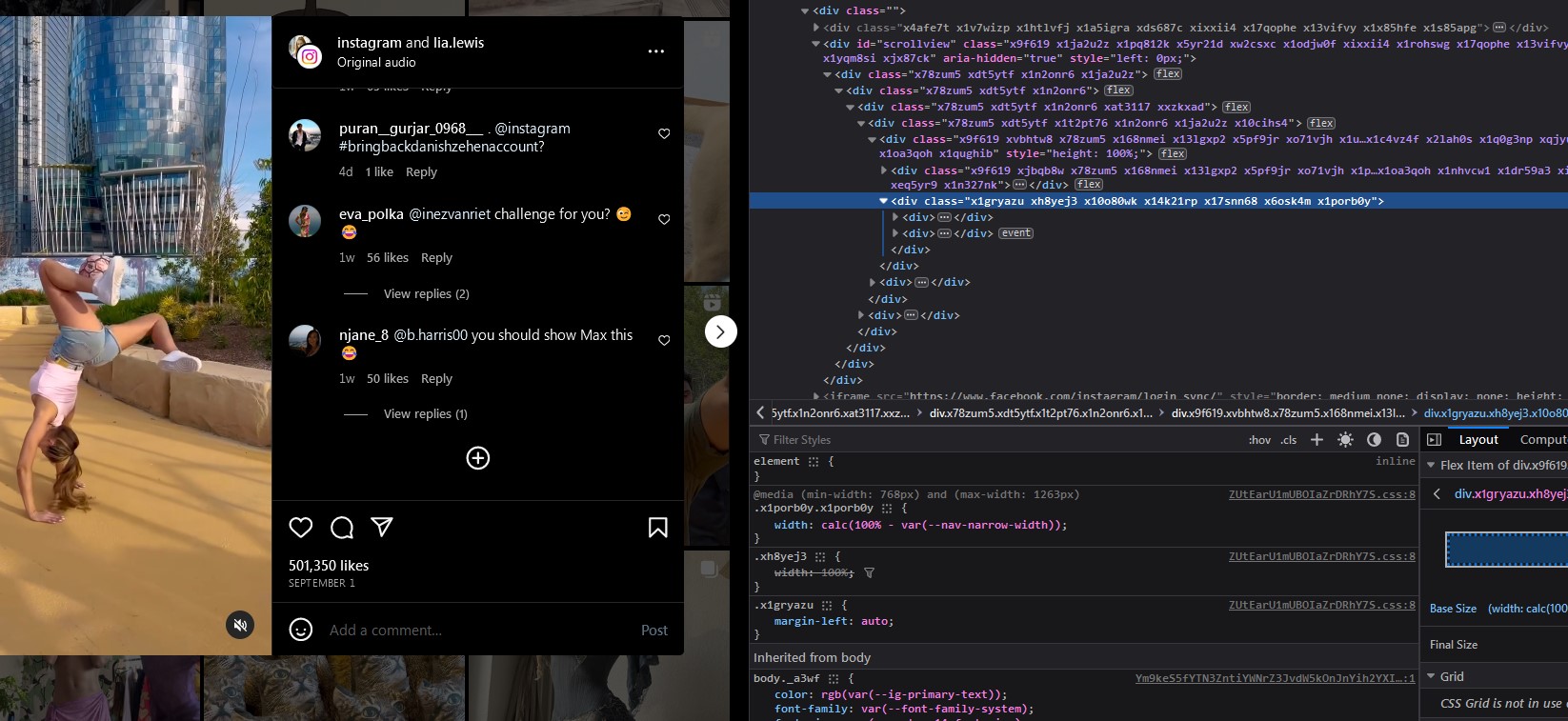
The Mechanics of Instagram Scraping
So, how does it work? Think of it like this: remember when you used to copy notes in school? Instagram scraping is somewhat similar. However, instead of manually copying, automated bots swiftly sift through posts and gather information. And the best part? There are various types of scrapers catering to different needs.
- Introduction: Instagram is a vast platform housing millions of images, videos, and textual data. For various reasons such as research, analysis, backup, or marketing, there might be a need to extract this data. This process is known as scraping, and when specifically targeting posts, the term “instagram post scraper” is often used.
- Web Scraping Basics: To understand the mechanics of an instagram post scraper, it’s essential to first comprehend web scraping basics. Web scraping is the process of extracting data from websites. It involves sending requests to the website, fetching the HTML response, and parsing this response to extract the desired information.
- Instagram’s Structure: Unlike some other platforms, Instagram’s frontend heavily relies on JavaScript, which can dynamically load content. This makes the scraping process slightly more complicated, as a simple HTML request won’t fetch all the data. An instagram post scraper would typically need to be more advanced, capable of handling JavaScript.
- API vs. Non-API Methods: While Instagram does offer an official API, it has limitations and requires permissions. Some instagram post scraper tools bypass the official API, directly scraping the website, although this is against Instagram’s terms of service and can result in bans.
- Steps involved in Instagram Scraping:
- URL Identification: For an instagram post scraper to work, it needs to know which URLs to target.
- Send a Request: Using libraries like Python’s Requests or tools like Selenium, the scraper sends a request to the identified URL.
- Fetch Response: The tool then fetches the response, which may be an HTML or JSON data.
- Data Parsing: Once the data is fetched, the instagram post scraper will parse and extract necessary information from the response.
- Storage: The scraped data is then stored in a desired format like CSV, JSON, or a database.
- Challenges: Using an instagram post scraper comes with challenges. Instagram employs various anti-scraping mechanisms like rate limits, CAPTCHAs, and IP bans. To navigate these challenges, scrapers might use tactics like rotating user-agents, using proxies, or introducing delays between requests.
- Ethical Considerations: While the technical aspects of an instagram post scraper are fascinating, it’s crucial to understand the ethical and legal implications. Always respect user privacy, obtain necessary permissions, and adhere to Instagram’s terms of service.
Benefits of Using Instagram Post Scrapers
Imagine knowing exactly what your competitors are up to? Or identifying potential influencers for your brand? Here’s how scrapers can be a game-changer:
- Market research and analysis: Dive deep into customer preferences and trends.
- Competitive analysis: Stay a step ahead of your competitors.
- Influencer identification and engagement: Find the best matches for your brand promotions.
Potential Drawbacks
But it’s not all rosy. Like the tale of Icarus flying too close to the sun, there are pitfalls to be wary of:
- Ethical concerns: Is scraping an invasion of privacy?
- Primary Research: Involves collecting new data that doesn’t exist yet, like surveys, interviews, and focus groups. For instance, a brand can use an instagram post scraper to extract posts with specific hashtags and then survey users for more in-depth feedback.
- Secondary Research: Involves using existing data like industry reports, market statistics, or, in the context of our keyword, data extracted via an instagram post scraper from previously made posts.
- Legal implications: With data privacy laws tightening, where does scraping stand?
- Instagram’s policies and restrictions: The platform isn’t too keen on scraping, often leading to account bans.
Key Features to Look for in a Scraper
Choosing the right tool can feel like finding a needle in a haystack. But fret not, here’s a handy list:
- User-friendliness: No one wants a tool that feels like rocket science.
User-friendliness is essential for ensuring a pleasant user experience. When a product or service is user-friendly:- Users are more likely to have positive interactions with it.
- There’s a reduced need for training or support.
- Adoption rates are higher, as people prefer tools and systems that are easy to use.
- There is a higher likelihood of user retention and loyalty.
- Data accuracy: Ensure the data you receive is pristine and error-free.
- Speed and efficiency: Time is money!
How to Choose the Right Instagram Post Scraper
Much like choosing a good wine, selecting the right scraper requires patience and knowledge:
- Price considerations: Budget-friendly doesn’t always mean subpar.
- User reviews and recommendations: Word of mouth is powerful.
- The longevity of the product: Opt for tools with a track record.
Practical Applications in Real Life
Remember that fashion brand that skyrocketed to fame overnight? Chances are they used a scraper. From case studies to successful scraping campaigns, real-world applications are numerous.
- Market Research: Companies and brands can use an Instagram post scraper to analyze trends and sentiments around their products or services. For example, if a cosmetic brand wants to know how their new lipstick line is being received, they can use the Instagram post scraper to fetch posts mentioning their brand and analyze the feedback.
- Competitive Analysis: An Instagram post scraper can help businesses monitor competitor activities. By scraping posts from competitors’ profiles, they can gain insights into their marketing strategies, product launches, and customer sentiments.
- Influencer Collaboration: Brands looking to collaborate with influencers can use an Instagram post scraper to evaluate the performance of influencers’ posts. The scraper provides data on likes, comments, and engagement rates, which can be pivotal in making partnership decisions.
- Content Strategy Development: Content creators can employ an Instagram post scraper to observe trending hashtags or topics. By understanding what’s trending, they can tailor their content to meet audience interests.
- Event Monitoring: During significant events, festivals, or product launches, an organization can use an Instagram post scraper to monitor real-time discussions and feedback. This provides valuable insights into how the event is being received and any areas of improvement.
- Academic Research: Researchers studying digital culture, online behaviors, or visual communication might use an Instagram post scraper to gather data sets for their studies. Analyzing Instagram posts can offer a unique lens into modern social behaviors and trends.
- Backup and Archiving: Users wishing to create a backup of their content or curate specific types of posts (like artworks or travel photos) can utilize an Instagram post scraper to pull their desired content for archiving.
- E-commerce Strategy: E-commerce businesses can harness an Instagram post scraper to gather user-generated content, like posts where customers showcase their products. These can later be used for testimonials or promotional purposes on their website.
List of instagram post scraper form PYPI :
instaloader: A powerful tool that provides many features for downloading pictures, videos, stories, profile pictures, comments, etc., from Instagram.instagramy: A simpler Python wrapper to extract data from Instagram without an API key.instagram-scraper: A command-line application written in Python that scrapes and downloads Instagram photos and videos.instascrape: A more recent addition, providing an object-oriented approach to scraping Instagram data with Python.igramscraper: Another tool that allows for the scraping of Instagram profiles, posts, hashtags, and more.pyinstalive: While primarily focused on downloading live streams from Instagram, it’s still a form of scraping.
List of instagram post scraper form GitHub :
- Always check the scraper’s documentation and read the terms and conditions. Ensure you are not violating Instagram’s terms of service, or else you might get banned.
- It’s a good practice to always respect privacy when scraping data.
- Some of these tools may no longer be maintained or may not work due to changes in Instagram’s API and security practices.
With that said, here’s a list of some popular Instagram scrapers on GitHub as of 2021:
- Instaloader
- Description: Instaloader is a tool to download pictures (or videos) along with their captions and metadata from Instagram.
- GitHub Link: https://github.com/instaloader/instaloader
- Instagram-Scraper
- Description: This is a command-line application written in Python that scrapes and downloads an Instagram user’s photos and videos.
- GitHub Link: https://github.com/rarcega/instagram-scraper
- Instagramy
- Description: Instagramy is a pure Python library to fetch Instagram profiles, posts, followers, and much more.
- GitHub Link: https://github.com/sananth12/instagramy
- InstaPy
- Description: InstaPy is an Instagram bot that automates certain tasks. While it’s primarily for automation, it contains scraping functionalities.
- GitHub Link: https://github.com/timgrossmann/InstaPy
- Scrapy-Instagram
- Description: This tool uses the Scrapy framework to scrape Instagram posts (pictures, comments, likes, etc.).
- GitHub Link: https://github.com/h4t0n/scrapy-instagram
Common Mistakes and How to Avoid Them
Walking the scraping path isn’t free of hurdles:
- Over-reliance on automated data: Don’t forget the human touch.
- Not updating the scraping tools: Regular updates are vital to stay relevant.
The Future of Instagram Scraping
Instagram constantly evolves, as do scraping tools. It’s an endless dance of Instagram’s evolving algorithms and the advancements in scraping technology. Stay tuned; the future looks promising!
Conclusion
Instagram post scraping is a potent tool for brands, researchers, and marketers. While its power is undeniable, it’s essential to tread with caution. Respect privacy, understand the law, and use the data responsibly.
FAQs
- Is Instagram scraping legal?
- It’s a gray area, but it’s essential to be aware of both Instagram’s terms of service and local data privacy laws.
- Can my account get banned for scraping?
- Yes, if detected, Instagram can suspend accounts involved in scraping.
- How accurate is the data from scrapers?
- It largely depends on the tool used. Always opt for reputable tools with good reviews.
- Do I need technical knowledge to use scrapers?
- Not always. Many modern tools prioritize user-friendliness.
- Can I scrape private accounts?
- Ethically and technically, it’s a no-go. Always respect user privacy.
